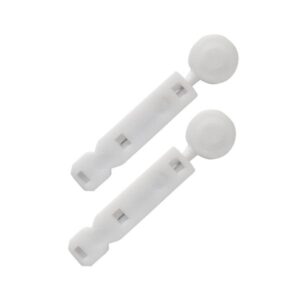BLOOD LANCET
BLOOD LANCET: The drug Blood Lancet is not a medication; it is a medical device used for blood testing purposes. Blood Lancets are small, disposable devices with a sharp needle that is used to prick the skin and obtain a small blood sample for diagnostic testing.
Use:
Blood Lancets are commonly used in healthcare settings to collect blood samples for various diagnostic tests like blood glucose monitoring, cholesterol testing, and blood typing. They are also used by individuals with diabetes to monitor their blood sugar levels at home.
Mechanism of Action:
Blood Lancets work by puncturing the skin, usually in a fingertip, to produce a small drop of blood. The lancet is typically spring-loaded and triggers a quick, controlled puncture when pressed against the skin. This process minimizes pain and usually results in only a small amount of blood being drawn.
Dose:
There is no specific dose for Blood Lancets, as they are not a medication but a device used to collect blood samples. The appropriate use and frequency of blood testing with Blood Lancets would depend on the individual’s medical condition and the specific tests being conducted. Healthcare professionals or healthcare providers generally determine the appropriate frequency and timing for blood collection.
Side Effects:
Blood Lancets are generally considered safe and have minimal side effects. However, some potential side effects may include:
1. Discomfort or pain at the puncture site
2. Minor bleeding
3. Bruising or hematoma formation.
4. Infection (rare but possible if the puncture site is not properly cleaned before use)
5. Allergic reactions to materials used in the lancet (rare)
It is crucial to follow proper procedures for blood sampling, such as cleaning the puncture site with an alcohol swab, to reduce the risk of infection and minimize discomfort.
It is important to note that individuals using Blood Lancets for home blood glucose monitoring or other diagnostic purposes should consult their healthcare provider for guidance on proper use and any specific precautions to be taken.

